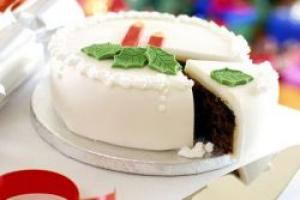Natural wood, as you know, is different. Usually it is divided into three groups according to hardness. Why hardness? This is one of the most important qualities for the consumer. Furniture is not in an empty room - we constantly touch it, periodically touch it, sometimes hit or scratch it. This is especially true for homes with small children. Knowing what the furniture is made of, we will immediately determine what properties it has and where it is better to place it.
The softest species include coniferous trees - spruce, pine, thuja - and some types of deciduous trees: linden, aspen. Hardwoods are oak, beech, elm, hornbeam, maple and, of course, birch. Leaving a dent or scratch on an oak panel is immeasurably more difficult than on a pine one. But to remove traces of damage from a tree, as you yourself understand, is very difficult. This is why hardwood furniture costs more and is valued higher.
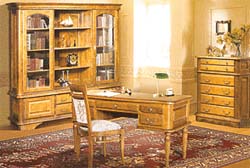 |
| photo 2 |
There are also very hard woods - this is boxwood, hornbeam, dogwood and yew. Furniture made from such wood is especially highly valued because of its special strength and exceptional durability. But it also costs much more than ordinary hardwoods, and it is much more difficult to purchase things from hornbeam or yew due to their rarity and high cost. AT Everyday life we tend to make do with more modest options.
The “economy option” among the wood species familiar to us is pine furniture (photo 1). It is easily distinguished from other species by its unique resinous aroma. Even processed and painted pine furniture retains a slight, subtle smell of resin. It is because of the "resin" that pine is considered curative for allergy sufferers and people with respiratory diseases. Resin-impregnated pine wood does not rot, warp or crack from temperature changes. And pine also tolerates moisture well - it’s not for nothing that in Russia from pine
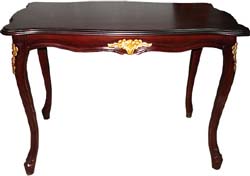 |
| photo 3 |
The most serious disadvantage of solid pine is its sensitivity to impacts and scratches. Traces of damage appear on pine furniture literally from a slight mechanical impact, and it is not so easy to remove them. Thus, pine furniture has to be periodically primed or painted. Birch is not too different from pine in price, but has much greater strength and hardness. (photo 2). In terms of environmental properties, birch is not inferior to pine - not only furniture is made from birch, but also, for example, cutting boards for products. It is believed that birch grows only in those places where there is a good ecological situation.
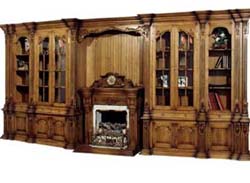 |
| photo 4 |
It is especially highly valued. However, furniture makers consider birch a “capricious” breed. First, birch wood is prone to decay. Secondly, birch furniture is sensitive to moisture - it quickly swells and dries for a long time. Differences in humidity do not benefit the birch - when dried, the tree may warp or decrease in size. Better conditions for birch furniture - constant temperature and low humidity. Only Karelian birch is resistant to these irritants with its amazingly beautiful, expensive wood of exquisite pattern. This variety of birch is valued all over the world on a par with such exotic species as ebony.
Durable and heavy beech is the third most popular type of wood. In addition to hardness and density, it has other advantages. Beech is a kind of "furniture production chameleon". Various paints and varnishes fit well on it, and with the help of chemical compositions from solid beech you can make a luxurious imitation of more expensive wood (photo 3).
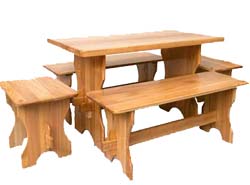 |
| photo 5 |
Unfortunately, beech is easily affected by some harmful factors. Beech is sensitive to rotting, so it is treated with antiseptics in furniture factories. In addition, beech wood in a humid atmosphere can warp, and when it dries, it can crack. Things made of beech feel best indoors, moderately dry and warm.
Oak can rightly be called the king of the furniture industry, and he received his title for a reason. Its hardness can be compared to stone or metal. Oak wood is a combination of durability, the highest strength, and an ideal pattern. The most noble and luxurious furniture, of course, is made of oak, and it can stand for several hundred years. The older the oak, the stronger the things made from it.
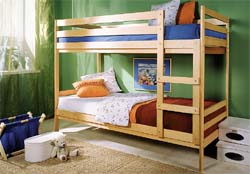 |
| photo 6 |
Oak furniture - these are things worthy of a whole novel (photo 4). And they have only one drawback - their high cost. This is explained not only by the exceptional beauty of oak, but also by the fact that this tree is quite difficult to process. In addition, oak does not lend itself well to staining, so oak furniture can look gloomy. Usually it is placed in spacious living rooms or in the head's office, where it looks perfect, gives solidity and respectability to the atmosphere.
Another outstanding breed in all respects is larch. In the old days, houses were built from it and ship masts were made. Larch does not rot and practically does not deteriorate, it is not afraid of moisture. In terms of durability, larch is only slightly inferior to oak. It is the ideal material for
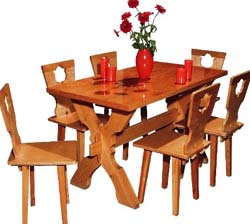 |
| photo 7 |
But finding such furniture is very difficult. (photo 5). Now larch is used mainly in construction, but furniture from it is made only to order, since this coniferous tree is extremely difficult to process.
Sometimes in stores you can find alder furniture (photo 6). Although not as popular as pine or oak, in some respects alder is not inferior to more expensive species. Alder wood is strong and light, it has a beautiful pattern and is easy to work with. Alder furniture does not swell from moisture, does not crack or dry out. At the same time, a non-specialist will not even guess that this is an ordinary Russian alder - in the air, and also under the influence of ultraviolet light, light wood turns yellow or orange. And furniture manufacturers are actively using it.
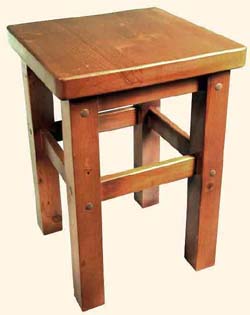 |
| photo 8 |
They make quality furniture from maple wood (photo 7). This material is practically devoid of flaws - maple is dense, hard, beautiful, almost does not warp and does not swell under the influence of external factors. Maple wood products are highly valued all over the world. In its structure, maple is close to boxwood, so maple is often used to make supposedly boxwood furniture. You can distinguish a fake if you know that maple is much inferior to boxwood in terms of density and hardness. However, real maple furniture is also expensive. An alternative to it can be things from linden, ash and cherry.
Cherry is often called "aristocratic" - its wood is usually pink-brown or yellow-brown. (photo 8). Thanks to this beauty, cherry is often used to create unique furniture. In addition, cherry has something in common with oak - the wood of both trees darkens over time. Of course, in terms of strength and hardness, cherry is inferior to oak, but surpasses the same pine or birch. And cherry wood is easily stained and takes various forms. Cherry furniture can seem both completely new and antique, and is especially appreciated for this - few wood species have such a quality.
Linden, unlike cherries, belongs to the category of softwoods. It is malleable, easy to cut and lends itself well to other types of processing. Linden products have a special beauty - the wood of this tree is snow-white, with a beautiful pattern (photo 9).
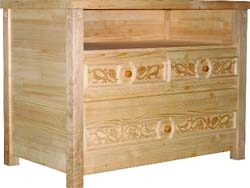 |
| photo 9 |
Ash is not as soft and pliable as linden - it belongs to hardwoods. Previously, the skeletons of carriages and other parts of horse-drawn carriages were made from ash. Ash wood is unlike other trees - it is matte, resilient, partly even "springy", so the furniture made from it is not only beautiful, but also comfortable. Ash can be processed, painted and polished without any problems. In terms of strength and hardness, this tree is comparable to oak, so ash furniture lives for a long time. Unlike linden, pine or birch, ash furniture is suitable for open spaces - for example, for a summer cottage or an outdoor gazebo. In terms of cost, ash is more expensive than birch or pine, but cheaper than species such as oak or maple.
A simple fisherman Min Kwok from Hong Kong supported his family by fishing and selling his catch in the markets. And nothing foreshadowed that a miracle could happen in his life!
Once the catch nearly put him into a trance, because instead of a fish he pulled a piece of wood out of the nets. But his sadness was short-lived - he saw that a yellow liquid, similar to oil, was flowing out of the log. Ming Kwok understood - she got into his network Gold fish, because it was a huge piece of the Eagle tree, which is priceless for medicine and perfumery, as it is a source for the manufacture of aromatic substances.
Rybak quickly sold the log for $138 million and became very rich. Now he fishes only for his own pleasure from his own boat, which leaves every day from his own pier, which is built near his own third villa on the ocean.
Yes, this is Agarwood (other names are scarlet tree, paradise tree, eagle tree, agar, agar, oud, oud, kalambak), Aquilária, grows in tropical forests Southeast Asia, the most valuable tree, heads a family of only 16 trees found in the world. Most of these trees have disappeared because they were destroyed in order to obtain essential oils. The average life expectancy of aquilaria is 70-100 years, it grows in humid tropical regions with an abundance of rain.
This is a large evergreen tree from which aromatic material has been extracted for many centuries. The dark, viscous core of the tree is used. At the beginning of a tree's life, the heartwood is light and light, but the climate and special microorganisms transform it into a unique natural aromatic substance.
Agarwood is obtained from special plantations in the jungle. The resulting wood, after drying, can be immediately used for fumigating rooms, as incense, or as a raw material for obtaining agar oil.
Aquilaria and, accordingly, agar oil is produced and grown only in Southeast Asia and imported to Arab countries by wholesalers and perfume companies. Agar oil is the result of the complex defense mechanism of the aloe tree. After a tree is infected with a fungus, it begins to produce resin, which “ripens” soaks the trunk and forms such valuable wood. This process takes from several decades to hundreds of years.
The oil is valued in perfumery, as it is a strong fixative, in small doses it is included in the formulations of exquisite oriental perfumes. The aroma of scarlet wood takes about 12 hours to open, on the skin the aroma can last more than a day. It is especially valued in the perfumery of Arab sheikhs and sultans. The aroma is strong, sweet-woody, almost balsamic, similar to the smell of styrax, vetiver, sweetness reminiscent of sandalwood.
The aroma of agar wood oil (Oud tree), belongs to the group of aphrodisiacs and has a very high cost (more expensive than gold). Obtaining this oil is an ancient process that has been kept secret for thousands of years. Oriental fragrances with oud tree oil are old recipe, known to a small circle of initiates.
Based on this aphrodisiac, expensive drugs are made for the treatment of sexual impotence.
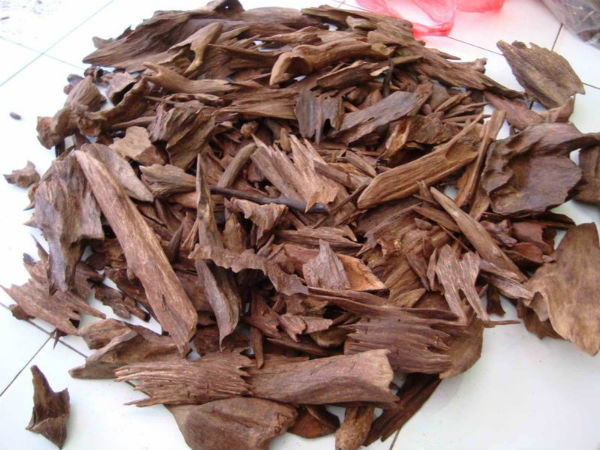
Why is oud so expensive?
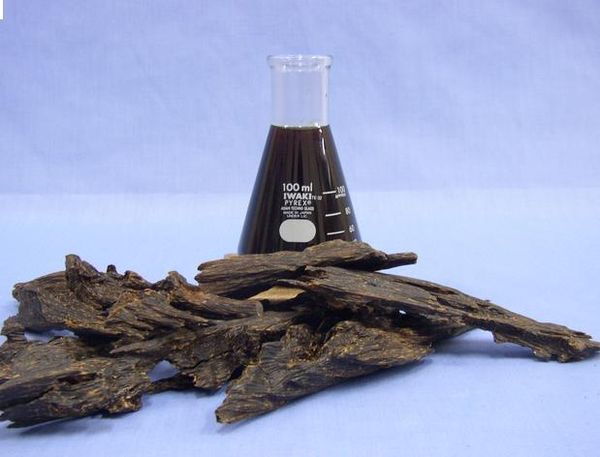
Low yield of oil from vegetable raw materials, the complexity of the extraction process and the lack of natural sources- these are the main reasons for the high cost of oud.
The wood used to make the oil has a low resin content and it usually takes a minimum of 20 kg of wood to make 12 ml of oil. According to Nabeel Adam Ali, director of Swiss Arabian Perfumes, the highest quality oud comes from wood that is over 100 years old.
This, of course, does not mean that young trees do not give a good aroma, but this is not quite the same level of quality, heritage and tradition. However, sales of oud-based perfumes continue to grow every year, and in order to meet demand, many perfumers have begun to use a mixture of natural and synthetic oud in their compositions. (New York Times)
Abdulla Ajmal, director of Ajmal Perfumes, estimated that about 20 years ago a kilo of high-quality "E-class" oud cost about $225.
Now the same amount of raw materials will cost about $1500. This is a staggering rise in prices. For those who are willing to spend more, the highest quality oud is available - $24,950 per kilogram. But Mr. Ajmal says profit margins are slim at that price. (New York Times)
Now the average price per kg on the market is about 18,000 euros. This raw material is mainly used in natural perfumery - to increase the durability and intensity of perfumes.
Another reason for the high cost of agar is that Aquilaria is now endangered. The most important Aquilaria species for fishing are A. agollocha, A. malaccensis and A. crassna. A. malaccensis is protected worldwide by CITES (Convention on International Trade in Species of Wild Fauna and Flora) and IUCN (World Conservation Union). A. crassna was listed as an endangered and protected species several years ago by the Vietnamese government.
Not all wood for furniture are equally good. And although today solid wood furniture is very expensive and considered a luxury item, not all wood has the same performance characteristics. There are varieties that are undesirable or even forbidden to use in certain conditions.
If we understand this issue in order, then for a start it should be noted that the furniture is made from wooden shields. Shields, in turn, are cut from solid wood or glued together from thin plates. Moreover, oddly enough, the second, glued, option is more expensive and its characteristics are better: higher density, strength and wear resistance.
There is a more affordable option - imitation of expensive types of wood with cheaper ones. To do this, a tree of not very high quality is stained, painted, varnished, due to which they achieve an external resemblance to a saw cut with top-grade material.
Another way to buy cheap “wooden” furniture is a chipboard base lined with high quality natural wood veneer. Veneer is a thin saw cut that conveys the color and structure of the rock. Such furniture differs from natural furniture by the presence of glued edges on the corner parts of the products. Veneer finishing is a good option, provided that the work is done well. Then the physical properties and the surface acquires the strength and stability of the original.
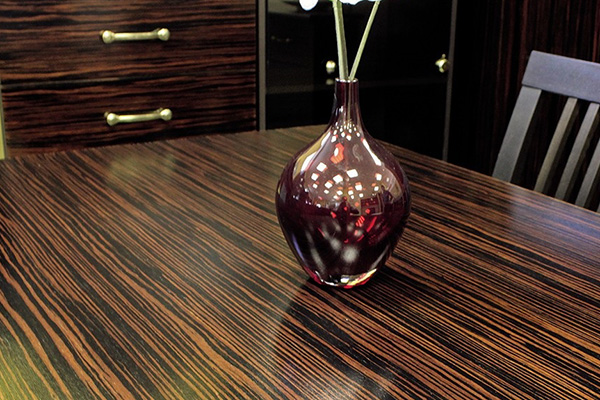
Like everyone else, they fall into three categories:
- Soft- linden, aspen, alder, almost all coniferous trees.
- Solid- larch, ash, oak, beech, birch.
- Extra hard- yew, boxwood, acacia, iron birch.
The most prominent representative of the first category is pine. Its wood is soft and somewhat loose, it is easy to cut, well glued, painted, not afraid of moisture and temperature changes. Therefore, pine can be safely used for kitchen sets, bedrooms, baths and bathrooms, as well as for the manufacture of garden furniture. Pine products have a subtle coniferous smell and emit very useful substances - phytoncides. However, the furniture is not very durable, prone to scratching.
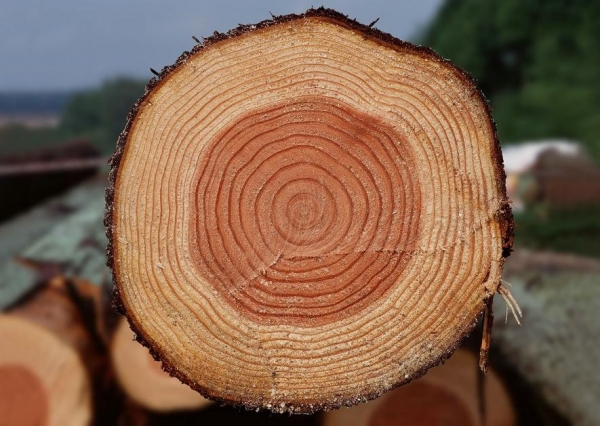
Traditionally, one of the most expensive and durable varieties is oak. It can have both a light, almost white, shade, and yellow-brown. Solid oak furniture looks solid and somewhat cumbersome. Therefore, it is better to install it in large spacious rooms. Oak is very durable and wear-resistant, not subject to rotting and temperature deformations. Therefore, it can be used to make dining tables, chairs, armchairs and tables for an office, a set for a children's room and all those interior items that are subjected to everyday heavy loads. Oak will withstand them with dignity, and oak furniture can be inherited, it will last a very long time.
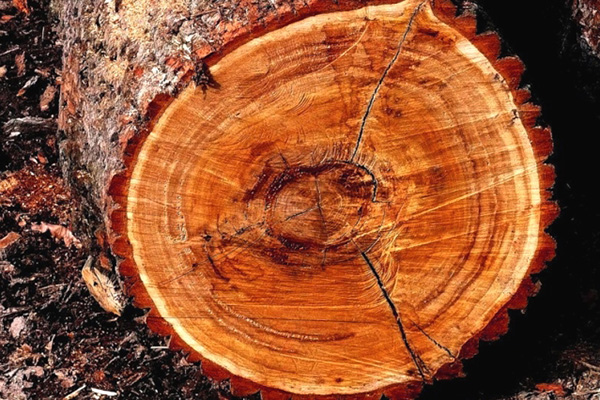
Walnut has a beautiful texture and color that varies from light shades to dark brown. Moreover, the older the tree, the darker its saw cut and the higher the performance. Walnut lends itself very well to finishing; carved decorative elements are made from it. It is very durable, so it does not have chips or scratches. In terms of its qualities, this wood is not inferior to expensive species, but is significantly cheaper, which makes walnut a fairly common material for making furniture.
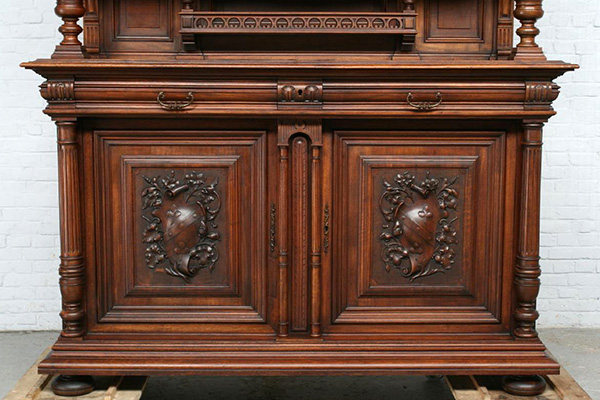
Birch is dense, but strongly influenced by the environment: it rots, worms, warps from temperature changes. It is often used for the manufacture of veneered boards, chipboard, plywood and imitation of valuable species, as it is easily stained and stained, and well processed.
Beech wood is not inferior in strength to oak, but does not tolerate contact with water, so its use in the kitchen and in the bathroom is not recommended. But beech bends perfectly, which makes it a leader in the manufacture of bent furniture elements.
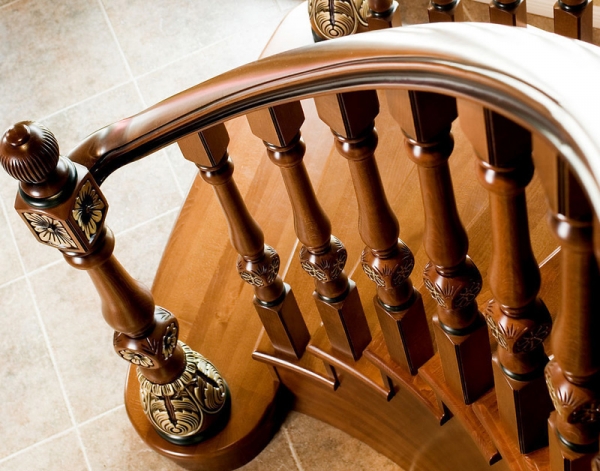
Most Valuable wood for furniture rarely used, more often - to decorate it or in combination with more affordable varieties. These include: maple, cherry, mahogany. From a solid array of such varieties, only exclusive furniture is made, often handmade.
If a decision is made to buy wooden furniture, then first of all, it is necessary to evaluate the factors that will affect the wood (humidity, high temperature, atmospheric phenomena, shock or other mechanical loads). Based on these parameters, it is worth choosing a suitable material that can cope with such conditions.

